A helmet is without a doubt the foremost important piece of kit a rider should have. Nowadays, you’ll find different types of motorcycle helmets on the market. While all of them have an equivalent purpose, some protect you quite well. This article will let you know about different motorcycle helmet types with PROS and CONS in detail.
According to the Centers For Disease Control and Prevention (CDC), motorcycles are more likely to be in a crash than cars. Statistics from the National Highway Traffic Safety Administration show that helmets are effective at preventing death by nearly 37%. And it reduces the risk of head injury by 69%. There’s more to that. According to a study on helmet impacts by Dietmar Otte, 66 % of helmet impacts occur around the chin bar and forehead areas.
So among the best motorcycle accessories, a reliable and quality helmet is an important piece of your riding equipment. It protects your head and faces just in case of various accidents and impact crashes. For this reason, it’s to be durable, secure, and cozy.
Choosing the simplest is entirely up to you, but you’ve got to understand all about them so as to form the simplest choice. Within the article below, you’ll find all the essential info on the differences and similarities between several Motorcycle Helmet Types with PROS and CONS.
Different Types of Motorcycle Helmets available in Market
A number of different types of motorcycle helmets are available in the market. Among all of them, the following 7 types are well recognized.
- Full-Face Helmet
- Half-Face Helmet
- Off-Road Helmet
- Open Face or ¾ Helmet
- Dual Sports Helmet
- Modular or Flip-Up Helmet
- Smart Helmet
1. Full-Face Helmet
Full-face is perhaps the foremost popular among all the different types of motorcycle helmets. They cover all of your head and face, also as your neck, and are taken into account as the safest sort of motorcycle helmet to guard you against potential impact. A distinguishing feature of the full-face helmet is the chin bar, which may be a key feature that a lot of helmets lack. Consistent with a study on helmet damage and motorcycle head injuries, the chin encounters one-half of severe impacts during an accident. Only a full-face helmet can provide you with protection for your chin and jaw.
A full-face helmet may be a versatile choice for all riders, no matter the sort of motorbike you ride or where you ride it. A full-face helmet varies counting on the sort of riding that you simply do.
During the colder months, the ventilation is often closed to scale back the airflow. New features have been added to full-face helmets in recent years. Bluetooth-capable speakers, high-visibility color options and styles, and visors that tint and suit sunlight conditions, etc are notable.
Their unique feature is that the chin bar plays a big role in its overall safety. It’s because your chin nearly always suffers severe damage during high-impact accidents. These helmets are the sole ones that protect the jaw and chin area in such a way.
Although they’re highly protective and quite popular, the full-face style isn’t for everybody. As we said, they cover your whole face so no area is left exposed which could be difficult for claustrophobic people. The below section shows the full-face motorcycle helmet types PROS and CONS:
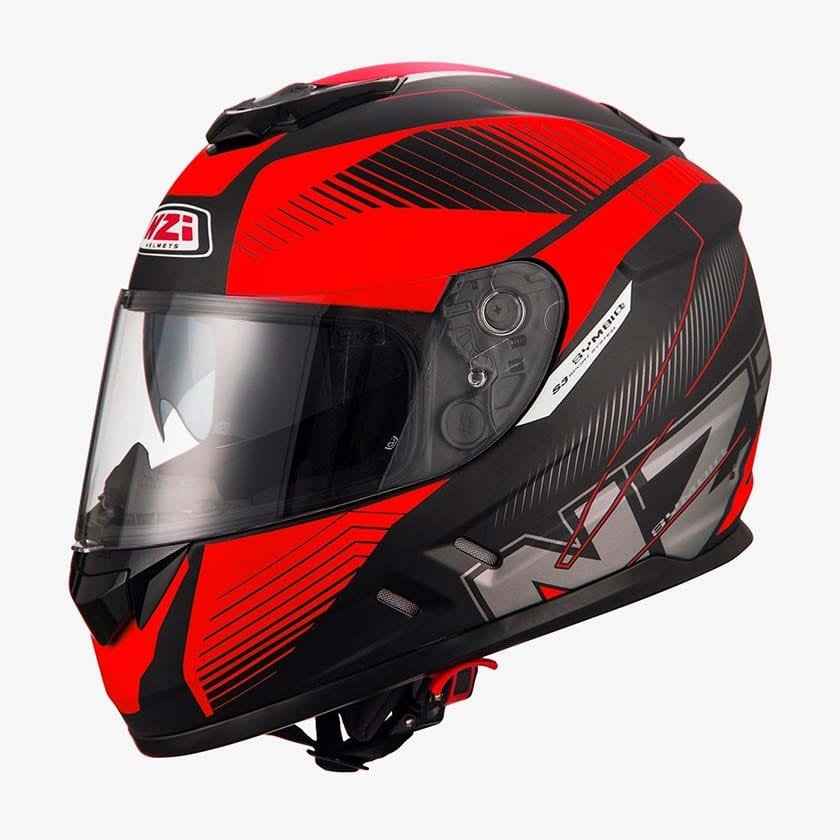
AutozMotoz recommended Top reviewed Full-Face Helmets
The following helmets are highly recommended by AutozMotoz if your choice is Full-Face helmet:
2. Half Face Helmet
Half helmets only cover the highest of your head and therefore the area from your forehead to your brows and supply minimal protection. Some may offer more coverage on the rear of your neck and ears but leave the remainder of your face exposed. Although the helmet provides great airflow, evidently, they provide significantly less protection than a full-face or ¾ helmet, yet, you’ll still find half-helmets that are DOT approved.
Among different types of motorcycle helmets most half helmets don’t come equipped with a visor or face shield. So you will definitely like to get eye protection within the sort of riding glasses or goggles. There are minimal technological features, like Bluetooth speakers, found on the helmets, as there isn’t any space for the features to be added to.
There are a couple of different designs of an equivalent type, so you would possibly encounter some that cover the rear of your neck. Still, your face is exposed altogether to variations of this feature.
Much like other opened designs, these are best for people that ride at low speeds. If you’re riding a sports bike at high speed, you almost certainly want some more protection then a half helmet is not a good choice for you. The below section shows the half-face motorcycle helmet types PROS and CONS:
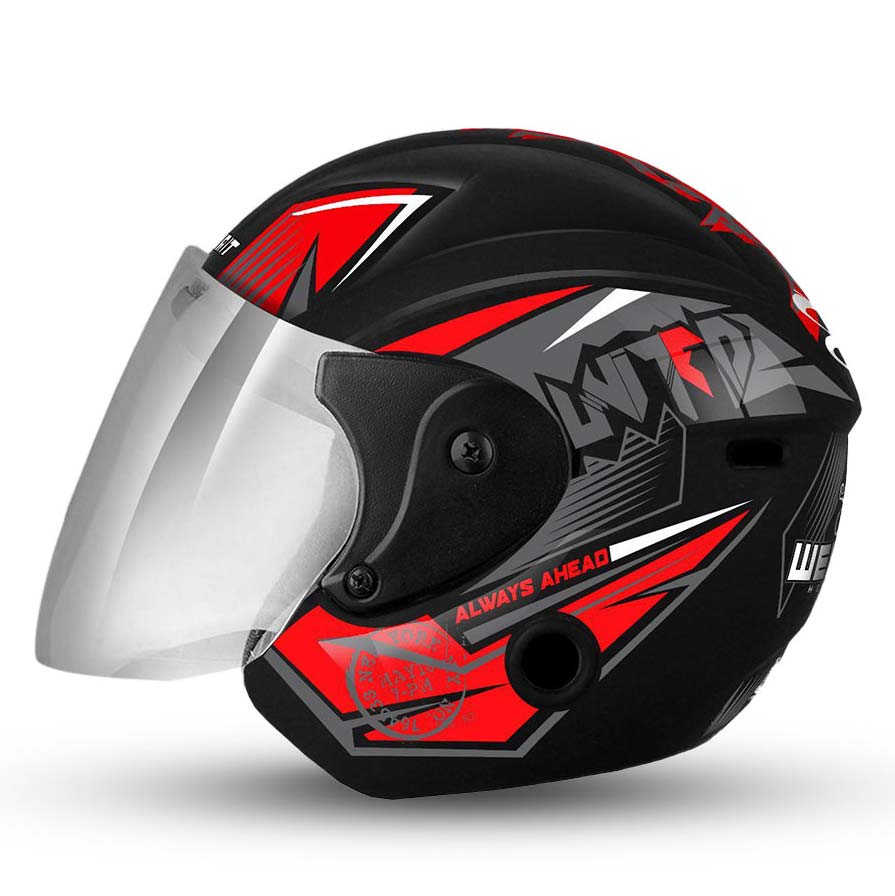
3. Off-Road Helmet
Off-road helmets are designed even as their name suggests, to ride off from the streets and on dirt roads. You shouldn’t use them within the city, and they’re not the simplest for highway use, but they’re great for rough areas with dust and dirt. It’s a special design than the complete and ¾ helmets, equipped with a bigger visor and more accentuated chin bar for better airflow. They typically are designed for max protection, minimum weight, and flowing ventilation for riding during the hotter months. So don’t expect lush comforts like Bluetooth speakers.
Like other different types of motorcycle helmets Off-road helmets usually don’t offer eye protection. As a result, the rider should prepare to ride with glasses or goggles. If you’re riding in dirt or mud, goggles are going to be the preference as they will seal against the rider’s face to stop debris intrusion from rock bottom and sides while riding. You can choose from Kevlar, fiberglass, and carbon fiber that provide strength and lightweight weight. These materials offer great strength and are lightweight to stay your head and neck from becoming fatigued after an extended day of riding.
If you propose to wear body armor or a brace, make certain to undertake the helmet with the additional gear. This will confirm that it fits comfortably before you buy the helmet. Also, make certain to check your goggles with the helmet to make sure the goggles seal to your face well.
Off-road models are quite comfortable. But you have to confirm the model of your choice is straightforward to wash if you plan to ride it on muddy and dusty roads. The below section shows the off-road motorcycle helmet types PROS and CONS:
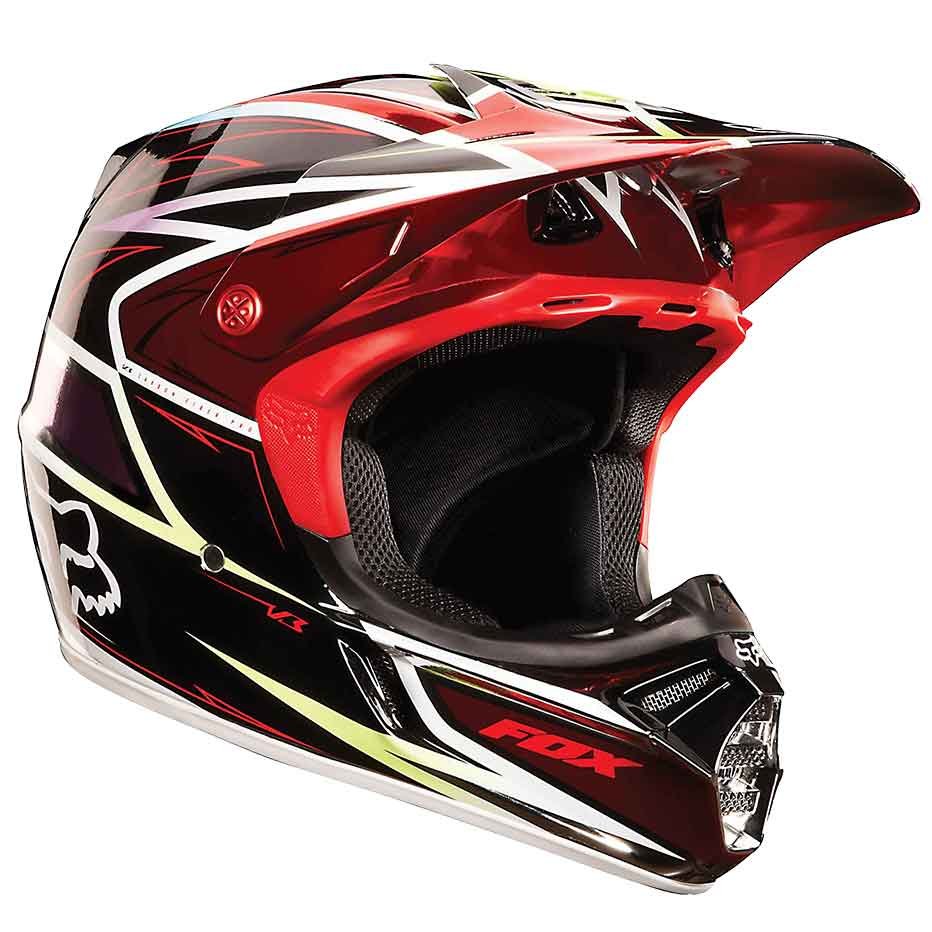
AutozMotoz recommended Top reviewed Off-Road Helmets
The following helmets are highly recommended by AutozMotoz if your choice is Off-Road helmet:
4. Open Face or ¾ Helmet
Open-face or ¾ helmets cover the highest back and sides of your head. These don’t cover your face, so you’ll enjoy the ride feeling the wind on your face. They’re usually employed by café racers, cruisers, scooters, tourers, and other different types of motorcycles.
The distinguishing feature of a ¾ helmet is the lack of a chin bar, which significantly reduces the security of the motorcycle helmet, because it leaves your face exposed. For this reason, it’s not the safest.
Open face helmets are considered structurally adequate to a full-face helmet, in terms of safety within the areas that they are doing to provide coverage. Open-face models don’t weigh the maximum amount since they’re smaller and lack a chin bar.
Additionally , due to the openness of the helmet, it doesn’t protect you against weather and road debris. They either come equipped with partial or full-face visors to protect the eyes and face from sunlight, or it’s going to require you to get the part separately.
Due to their overall construction, these are mostly recommended to people that ride at low speeds. They’re also great for claustrophobic and other people susceptible to fatigue. The below section shows the Open Face motorcycle helmet types PROS and CONS:

5. Dual Sports Helmet
Dual sport helmets are a mixture between an off-road helmet and a full-face helmet from different types of motorcycle helmets. It’s exterior styling with an outsized visor and lower chin bar but offers more interior padding and luxury almost like a full-face helmet. These are meant to be a halfway point between each style, as they’re designed for use both on the road and off-road.
The dual-sport helmets offer a bigger eye protection visor than a full face, but they also can snap into an up position to be used for goggles. The Visors are aerodynamic which suggests that they don’t lift within the wind. The chin bar isn’t as protrusive as an off-road helmet, so there’s better soundproofing and not the maximum amount of airflow. That’s an excellent option once you mix terrain on an equivalent riding day. Use the visor within the down position on the road to the trail, then snap it up for goggles and get maximum airflow.
In essence, they carry the simplest of both worlds, but they also bring some setbacks from each type. Anyone can use them in and out of the town area as they’re quite simple and straightforward to place on and begin. The below section shows the Dual Sports motorcycle helmet types PROS and CONS:
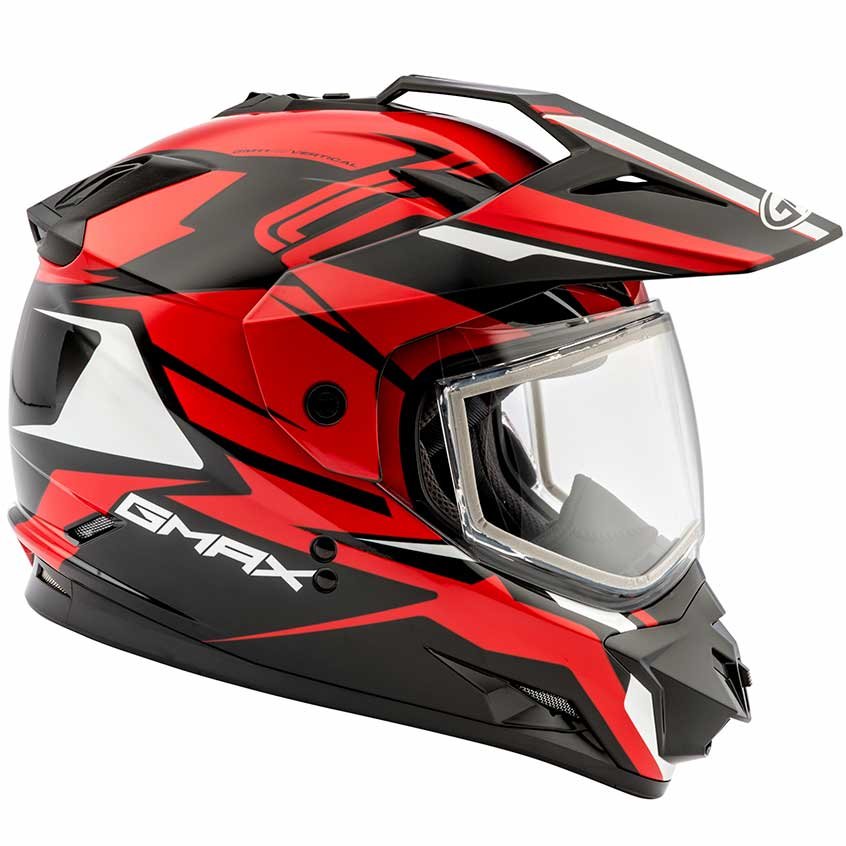
6. Modular or Flip-Up Helmet
Modular helmets are also called flip-up helmets. They are a mixture between a ¾ helmet and a full-face helmet, the rationale being that the chin bar and visor. The visor has the facility to flip up to open the front portion of the helmet.
At first glance, they appear almost like full-face ones and even feature equivalent materials. They include a visor for eye protection and infrequently include a secondary internal visor for extra eye protection from the daylight.
Modular helmets tend to weigh slightly quite the normal full-face helmet though the additional design hinge features are incorporated into the flip-up front area. The hinge structure of the helmet slightly reduces rider safety, as it introduces a small fissure instead of maintaining a continuous surface like a full-face helmet, but it provides more protection as compared to the ¾ or ½ helmet to the added chin protection.
It’s a perfect model for you if you’re an adventure rider or a cruiser. It has wide eye openings, and therefore the chin bar is lower on the face. This is often excellent for an upright riding position.
Good ventilation is equally as important to stay the air flowing once the flip-up part is lowered and covering your face. Without air vents, its visors would fog, and therefore the inside will become quite warm. At that point, A modular helmet is a good choice as you will have the option to flip up the front portion if required. The below section shows the modular motorcycle helmet types PROS and CONS:

7. Smart Helmet
Of course, prioritizing road safety should always be your utmost concern. However, there’s no harm in incorporating additional enhancements to enhance your riding comfort and overall experience!
Smart helmets offer much more than just traffic safety. They come equipped with extra technological features such as tracking systems, voice assistance, emergency buttons, and Bluetooth connectivity, which allow for smoother and safer travel.
Many models even include features that enable you to capture photos, record videos, listen to music, and even make or receive phone calls without using your hands. What’s even better is that these helmets are often powered by solar energy or batteries, making them an incredibly energy-efficient solution!
But above everything, there remains some good side and bad side to everything. The below section shows the Smart motorcycle helmet types PROS and CONS:

- Enhanced padding and upgraded hardware to enhance accident prevention.
- Intelligent devices for seamless hands-free operation.
- Innovative features designed to enhance driving convenience, including communication, entertainment, and navigation systems.
- The additional features can cause distractions while riding.
- The cost is significantly higher compared to other types
Motorcycle Safety Standards
When choosing your helmet from different types of motorcycle helmets that most closely fits your riding style, it’s important to seek out one that meets motorcycle helmet safety standards. In the US, a D.O.T. (Department of Transportation) helmet could also be a requirement by law in your state. So as for it to be sold within the US, it must have the DOT certification. Other countries or regions around the world have similar certifications, and there are 3rd parties that provide certification too.
Most certifications are similar in what they test on each helmet, with slight variations on the certification values to satisfy or exceed impact forces, energy distribution, and retention of the rider’s head. If you select to wear a helmet, and you ought to be wearing one following the ATGATT mindset, confirm it meets the testing standard or goes beyond what’s required for your location.
Some other certification like ECE & SNELL is also available but all the standard follows the same criteria. To know more about Motorcycle Safety Standards read this article from road racers.
What are helmets made of?
Modern helmets are very different from the primary models regarding weight, safety, and looks. Manufacturers are following new technologies and different materials to build a helmet so that it consists of all the typical features a helmet should have. Different motorcycle helmet types are made of different kinds of materials keeping stability, weight, secureness, etc. in mind.
The most common material is plastic, but others like fiberglass, Kevlar, and carbon fiber also are available. Still, once we say plastic, it’s crucial to say that it’s not any ordinary plastic. It’s specially engineered to satisfy security requirements. These are foremost popular because they’re very lightweight and play a good role in the balance between durability and weight.
Underneath the plastic shell, there is a thick padding foam. Fiberglass, on the opposite hand, has great flexibility. These take in an excellent deal of impact and may withstand more pressure and force than plastic ones. It’s also a lightweight material, but as we said, it’s more durable and versatile than the others utilized in street helmets.
When it involves high-performance racing models, you’ll encounter some sturdier and very strong materials. In best cases, Kevlar and carbon fiber are used in their outer shell. These are great for absorbing the high impact that might probably break a regular helmet into pieces. For this reason, Kevlar and carbon fiber models are for those that want the simplest safety. The cost of Kevlar and carbon fiber models are higher than other plastic material helmets.
How to choose the right Helmet?
Once you own a motorcycle it’s a very important part to choose the right helmet. Whatever type you decide on, confirm you get the right size because this plays a serious role in how safe the helmet is. The following points are important when you are planning to buy a helmet.
Size:
The size is directly connected to comfort. For this reason, small helmets are tightly pressing on your head and might offer you a headache, while big ones are noisy and plainly unsafe. Plus, an ill fit nearly always leads to people abandoning wearing a helmet altogether. So, the primary thing you ought to do is measure your head and compare the numbers with the brand’s sizing chart. Normally sizes from Small to Large are available i.e.: S, M, L, XL, XXL.
Weight:
The next thing you must keep in mind is the Weight. Your choice may be a weight that is comfortable and comparatively lightweight. Normally the certified helmets weigh from 1400 gm to 2200 gm. So you need to rightly choose if the weight seems comfortable to you or not. If you ride a lot then you have to get a lightweight helmet but if your riding period is low or average then it’ll not be a problem.
A Typical Helmet Analysis
The motorcycle helmet is consistently evolving to stay up with technological advancements, including the utilization of lighter materials for reducing strain on the neck, additional padding for extra comfort, and Bluetooth speakers to permit you to require advantage of your smartphone’s capabilities like navigation, music or hands-free calling, and far more.
Although the design of motorcycle helmet consists of several component and features, out of these innovative features, the core anatomy of the motorcycle helmet has remained an equivalent for many years. There are four main parts of a motorcycle helmet:
- The outer shell
- Impact Absorbing Liner
- Padded Comfort Layer
- Retention System/Chin Strap
Each part of the helmet each serves a selected purpose and contributes to keeping your head safe. A typical helmet usually have the following parts including the above-mentioned key parts.
The Outer Shell
The outer shell is the exterior part of the helmet you see from the surface. It’s usually made from carbon fiber, Kevlar, polycarbonate, or molded plastics. It can also be a combination of those. Its primary function is to guard your head in the event of impact or abrasion and to stop penetration from outside objects, like rocks, insects, etc.
Impact Absorbing Layer
On the inside of the outer shell is the impact-absorbing liner, typically made up of EPS (expanded polystyrene) foam. The first function of the liner is to soak up the shock and displace energy during an impression. The outer shell keeps external objects from penetrating the helmet, while the inner layer soaks up shock and displaces energy just in case of an accident. Some layers could also be made up of one-density foam, while other models include a dual-density layer (two layers combined) for added energy displacement during an impression.
Padded Comfort Layer
The area that your head rests against while you’re wearing the helmet is the padded comfort area of a helmet. It typically consists of an open-cell foam that’s covered with a second cloth material, designed to wick away sweat and keep you cool while riding. It’s normally removable for cleaning purposes and also interchangeable to accommodate different head shapes. ask your helmet manufacturer to ascertain if they provide different comfort liner shapes to best suit your head shape.
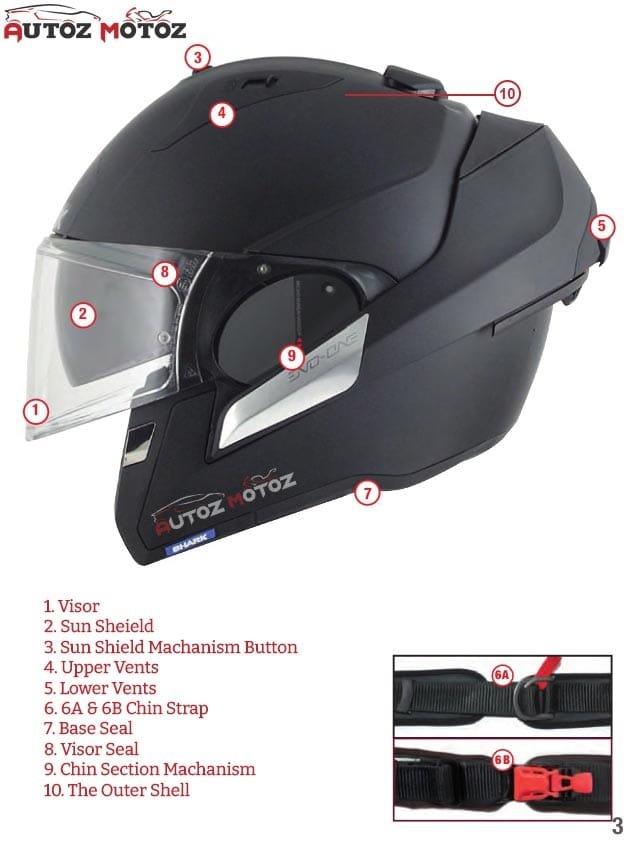
Retention-System/Chin Strap
The helmet retention system, also known as the chin strap, is a part that secures below your chin to stay with the helmet on your head while you ride. It’s made up of a woven material and fastened with two d-rings or with some plastic clip to remain secured. When properly secured, the strap should only leave two fingers between the strap and your chin. The strap is typically partially covered by an identical cloth because the comfort liner wicks away sweat and for comfort because it rests against your skin.
Vents
The vent is mainly the air circulation system within the helmet. The ventilation on the helmet is supposed to stay the rider’s head cool and to assist evaporate off the seat as best as possible. Ventilation is more prevalent on full-face and ¾ helmets but can vary by type counting on the manufacturer. Most vents have the choice to open and shut for various weather. You’ll prefer it fully open during warmer months, fully closed during cooler months, and somewhere in-between during other parts of the riding season. They’re adjustable, which makes them a great option for every individual rider’s comfort.
Face Shield/Visor
The face shield or visor may be a feature meant to stay bugs, debris, and other external objects out of your helmet. They’re usually designed to be removable for cleaning purposes or to swap out for an additional shield/ visor. They are available in customizable colors and tints for various riding environments. Different visors like transparent, low light visors, anti-reflection, and polarized visors are available in the market and can easily be replaced with the existing helmet visor based on the model.
Cheek Pads
Full-face and ¾ helmets have cheek pads inside the helmet that rest against your cheeks. they’re removable for cleaning and are customizable to accommodate different head shapes. they’re another comfort feature almost like the padded comfort liner, intended to supply extra protection to your face and to assist keep the helmet in situ on your head.
Conclusion
Here we’ve described 7 types of motorcycle helmets that are available in the market. Before you buy any helmet for you first list out the answers to how often you ride your bike, When and where do you ride your bike? Think about the weather you are riding on. Think about the maximum weight you can carry on your head while riding. Don’t forget about the certification standard. All of the questions and answers will help you to find out the right fit helmet for you. Happy reading, and enjoy riding!


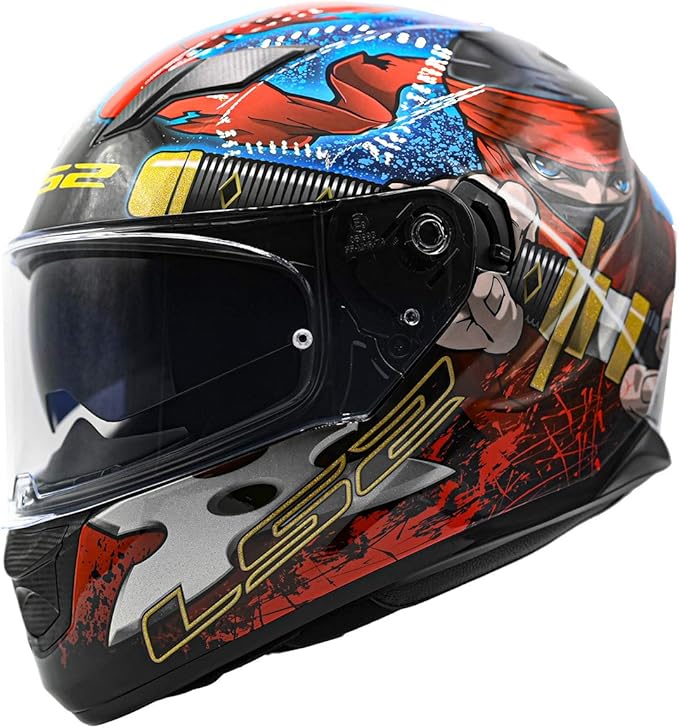








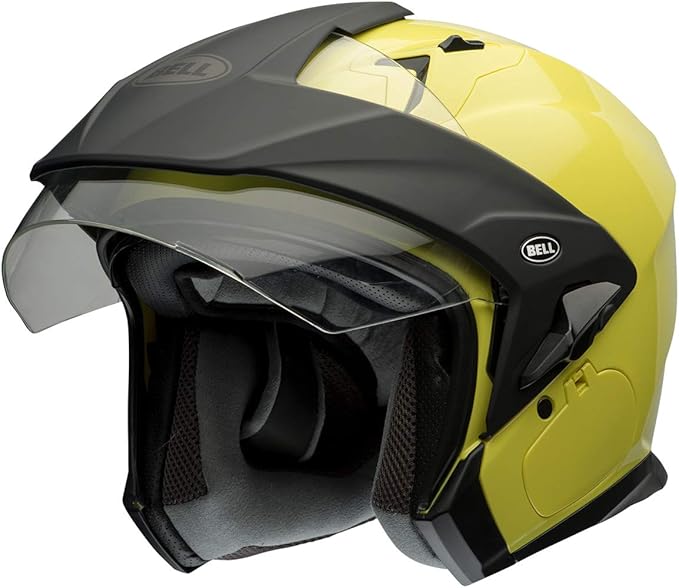


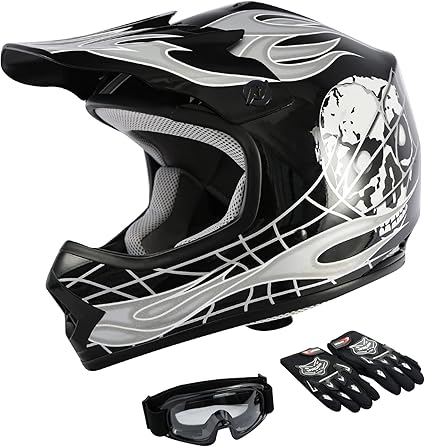
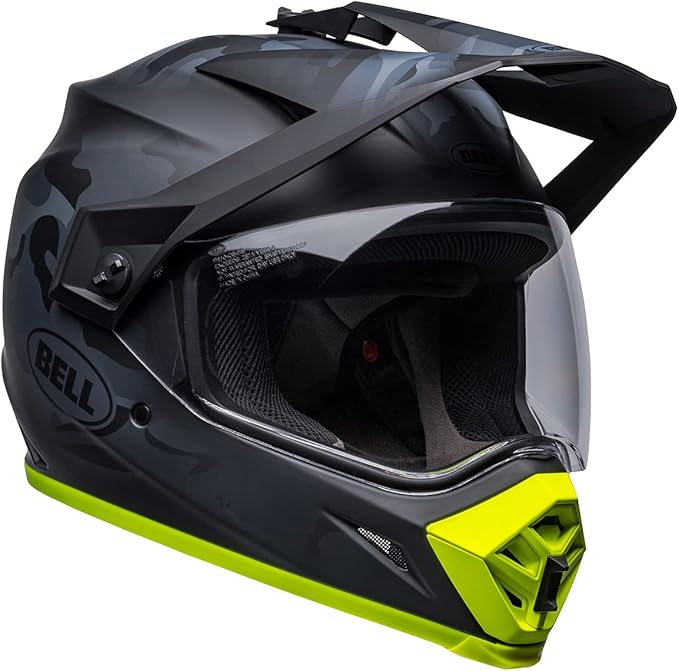


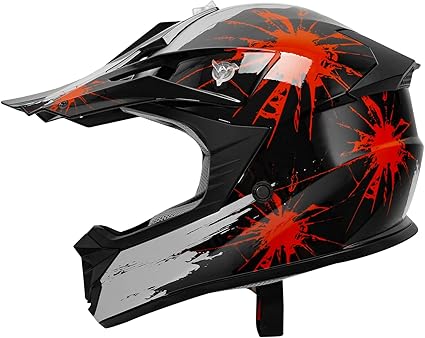






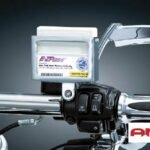

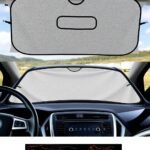
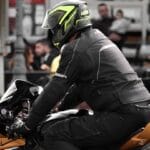

2 Responses